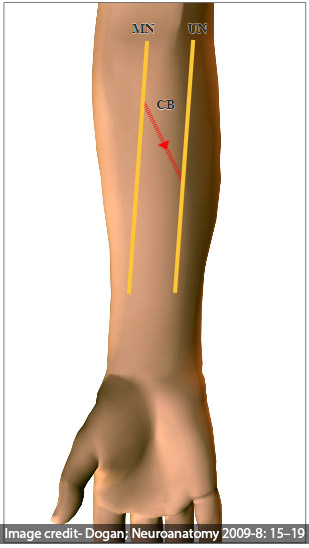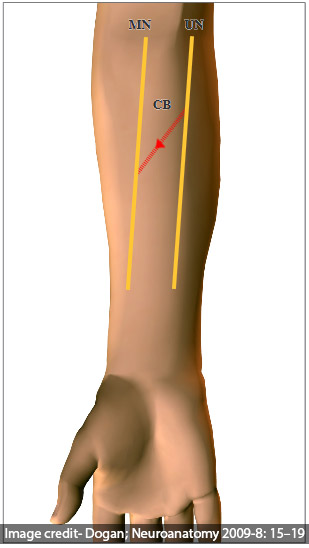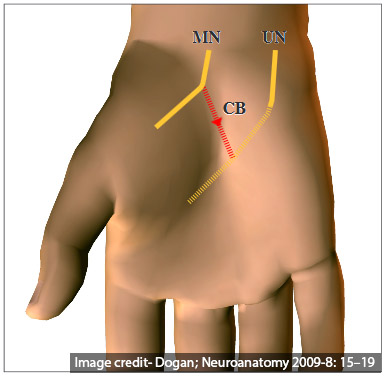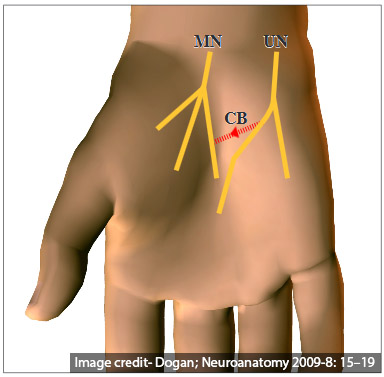The Median and Ulnar nerves don’t give any branches in the arm. In the forearm and the hand, four communications have been described between them: two in the forearm (Martin- Gruber, Marinacci/ Reversed Martin- Gruber anastomosis) and two in the hand (Riche- Cannieu, Berretini anastomosis).1
Communications in the Forearm
1. Martin-Gruber anastomosis
Median (or anterior interosseous nerve) to Ulnar nerve.
💡 MNEMONIC ➜ “It’s all in the name”- M- goes with- U
It has an autosomal dominant inheritance pattern. It is more common on the right side and has no sex predilection.
2. Marinacci communication /Reversed Martin Gruber anastomosis
Ulnar to Median nerve.
It’s rare compared to Martin Gruber anastomosis.
Communications in the Hand
1. Riche-Cannieu anastomosis/Cannieu-Riché anastomosis (CRA) or Thenar ansa
Median (recurrent branch) to Ulnar (deep branch) nerve in the thenar region.
It has an autosomal dominant inheritance pattern. Its incidences is 70- 80% (less frequently present in African Americans).
2. Berretini anastomosis
Ulnar to Median nerve (between the common digital nerves arising from them)- aka ramus communicans or superficial communicating branch.
Since many investigators found its incidence to be over 80%, the Berretini anastomosis should be considered a normal structure rather than an anatomic variation. It has no age, sex or race predilections.
If you found this post useful subscribe below for more such articles & subscribe to our YouTube channel for video tutorials. You can also find us on Facebook, Twitter and Instagram.
Reference
- Nadire Unver Dogan et al. The communication between the ulnar and median nerves in upper limb. Neuroanatomy 2009-8: 15–19

Tutorials & tips in Plastic Surgery
+ Weekly updates of high-quality webinars!







